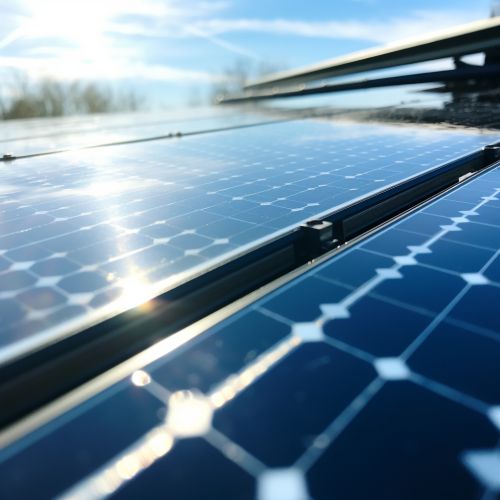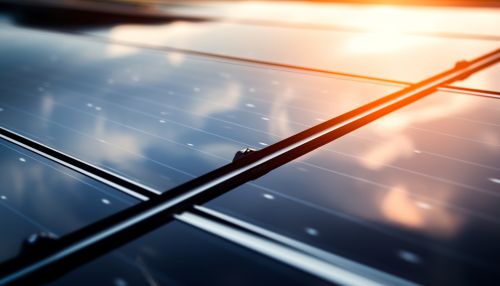Photovoltaics
Introduction
Photovoltaics (PV) is a method of generating electrical power by converting solar radiation into direct current electricity using semiconductors that exhibit the photovoltaic effect. Photovoltaic power generation employs solar panels composed of a number of solar cells containing a photovoltaic material. Materials presently used for photovoltaics include monocrystalline silicon, polycrystalline silicon, amorphous silicon, cadmium telluride, and copper indium gallium selenide/sulfide.


History
The development of photovoltaics has been driven by the recognition of the need for renewable sources of energy. The first practical application of photovoltaics was to power orbiting satellites and other spacecraft, but today the majority of photovoltaic modules are used for grid-connected power generation. In this case, an inverter is required to convert the DC to AC.
Physics of Photovoltaics
The operation of a photovoltaic cell is based on the photoelectric effect, by which light hitting a material can free electrons, creating an electric current. The photoelectric effect was first observed by Alexandre Edmond Becquerel in 1839. The process of conversion first requires a material which absorbs the solar energy (photon), and then raises an electron to a higher energy state, and then the flow of this high-energy electron to an external circuit.
Materials
The most commonly known solar cell is configured as a large-area p–n junction made from silicon. Other possible solar cell types are organic solar cells, dye-sensitized solar cells, perovskite solar cells, quantum dot solar cells etc. The illuminated side of a solar cell generally has a transparent conducting film for allowing light to enter into the active material and to collect the generated charge carriers. Typically, films with high transmittance and high electrical conductance such as indium tin oxide, conducting polymers or conducting nanowire networks are used for the purpose.
Efficiency
The efficiency of a solar cell may be broken down into reflectance efficiency, thermodynamic efficiency, charge carrier separation efficiency and conductive efficiency. The overall efficiency is the product of these individual metrics.
Applications
The largest application of solar panels (as of 2020) is solar water heating. Photovoltaic power is also increasingly, used to power remote sensing stations, roadside emergency telephones, remote lighting and to meet other power needs. Some vehicles are fitted with solar-powered air conditioning to limit interior temperatures on hot days. A solar vehicle is an electric vehicle powered completely or significantly by direct solar energy.
Environmental Impact
While a lifecycle analysis of photovoltaics can vary, in general, the environmental impacts are much smaller than traditional energy sources. A 2015 review in Renewable and Sustainable Energy Reviews assessed the harmonized lifecycle greenhouse gas emissions, energy payback time (EPBT) and energy return on energy invested (EROEI) from an empirical perspective. It found that the median GHG emissions were 40 gCO2eq/kWh which is less than the emissions from conventional energy sources.
Economics
The cost of photovoltaics has declined rapidly, and in some cases, the cost of a photovoltaic system can be competitive with conventional power sources. In addition, with a potential increase in energy tariffs, the relative costs of photovoltaic technology have declined. The payback period for a residential photovoltaic system can vary greatly, but on average it is around six to ten years.
Future Developments
The future of photovoltaics is likely to continue to involve improvements in efficiency and reductions in cost. These improvements will be driven by advances in technology and materials, as well as by economies of scale and increased competition. In addition, the development of new applications for photovoltaics, such as building-integrated photovoltaics, could further increase the demand for photovoltaic technology.
